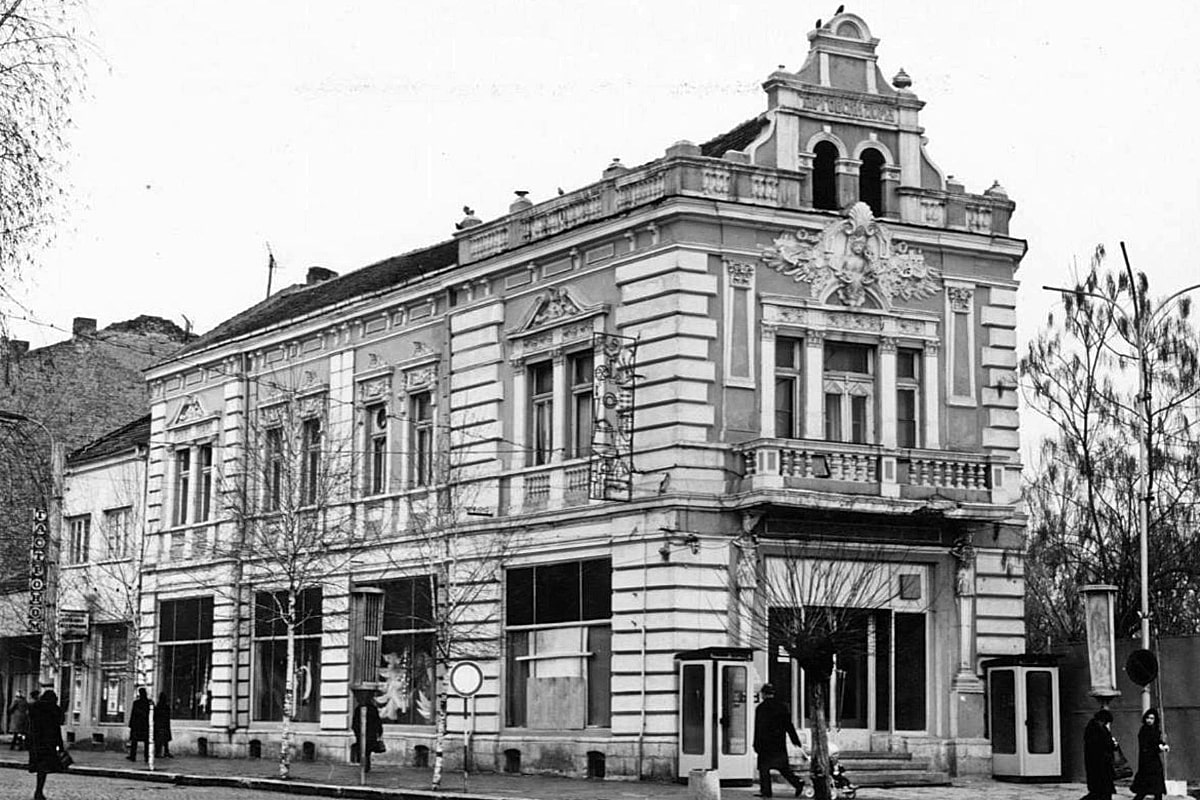
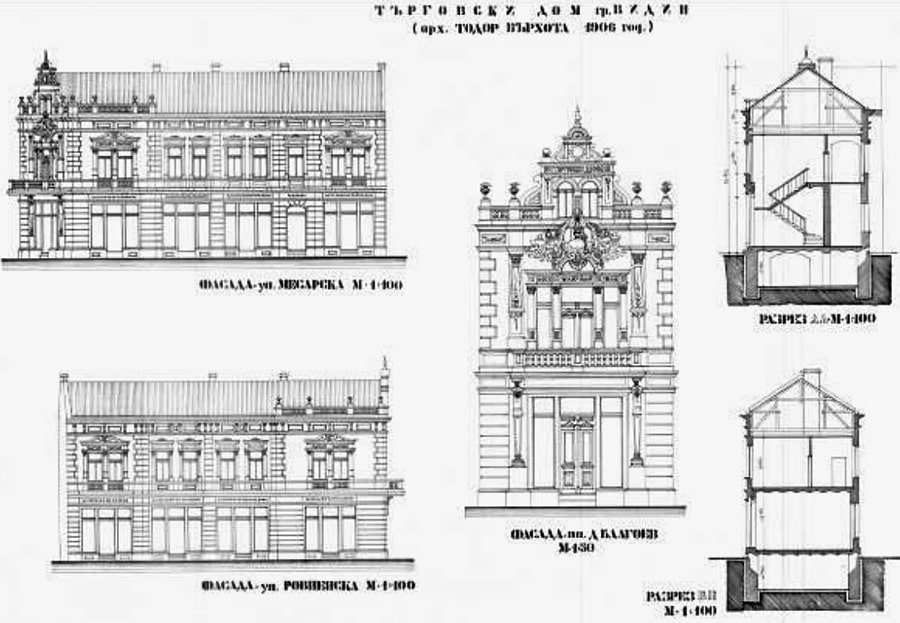




An avant-corps, a French term literally meaning "fore-body", is a part of a building, such as a porch or pavilion, that juts out from the corps de logis, often taller than other parts of the building. It is common in façades in French Baroque architecture.


Balconet or balconette is an architectural term to describe a false balcony, or railing at the outer plane of a window-opening reaching to the floor, and having, when the window is open, the appearance of a balcony.


A baluster is a vertical moulded shaft, square, or lathe-turned form found in stairways, parapets, and other architectural features. In furniture construction it is known as a spindle. Common materials used in its construction are wood, stone, and less frequently metal and ceramic. A group of balusters supporting a handrail, coping, or ornamental detail are known as a balustrade.


A bifora is a type of window divided vertically into two openings by a small column or a mullion or a pilaster; the openings are topped by arches, round or pointed. Sometimes the bifora is framed by a further arch; the space between the two arches may be decorated with a coat of arms or a small circular opening. The bifora was used in Byzantine architecture, including Italian buildings such as the Basilica of Sant'Apollinare Nuovo, in Ravenna. Typical of the Romanesque and Gothic periods, in which it became an ornamental motif for windows and belfries, the bifora was also often used during the Renaissance period. In Baroque architecture and Neoclassical architecture, the bifora was largely forgotten or replaced by elements like the three openings of the Venetian window. It was also copied in the Moorish architecture in Spain.


In architecture the capital (from the Latin caput, or "head") or chapiter forms the topmost member of a column (or a pilaster). It mediates between the column and the load thrusting down upon it, broadening the area of the column's supporting surface. The capital, projecting on each side as it rises to support the abacus, joins the usually square abacus and the usually circular shaft of the column.


A cartouche (also cartouch) is an oval or oblong design with a slightly convex surface, typically edged with ornamental scrollwork. It is used to hold a painted or low-relief design. Since the early 16th century, the cartouche is a scrolling frame device, derived originally from Italian cartuccia. Such cartouches are characteristically stretched, pierced and scrolling.


In architecture, a corbel is a structural piece of stone, wood or metal jutting from a wall to carry a superincumbent weight, a type of bracket. A corbel is a solid piece of material in the wall, whereas a console is a piece applied to the structure.


In architecture, a cornice (from the Italian cornice meaning "ledge") is generally any horizontal decorative moulding that crowns a building or furniture element - the cornice over a door or window, for instance, or the cornice around the top edge of a pedestal or along the top of an interior wall.


A dentil is a small block used as a repeating ornament in the bedmould of a cornice. Dentils are found in ancient Greek and Roman architecture, and also in later styles such as Neoclassical, Federal, Georgian Revival, Greek Revival, Renaissance Revival, Second Empire, and Beaux-Arts architecture.


A festoon, (originally a festal garland, Latin festum, feast) is a wreath or garland hanging from two points, and in architecture typically a carved ornament depicting conventional arrangement of flowers, foliage or fruit bound together and suspended by ribbons. The motif is sometimes known as a swag when depicting fabric or linen.


A keystone is a wedge-shaped stone at the apex of a masonry arch or typically a round-shaped one at the apex of a vault. In both cases it is the final piece placed during construction and locks all the stones into position, allowing the arch or vault to bear weight. In arches and vaults, keystones are often enlarged beyond the structural requirements and decorated. A variant in domes and crowning vaults is a lantern.


In architecture, a mascaron ornament is a face, usually human, sometimes frightening or chimeric whose alleged function was originally to frighten away evil spirits so that they would not enter the building. The concept was subsequently adapted to become a purely decorative element. The most recent architectural styles to extensively employ mascarons were Beaux Arts and Art Nouveau.


The palmette is a motif in decorative art which, in its most characteristic expression, resembles the fan-shaped leaves of a palm tree. It has a far-reaching history, originating in ancient Egypt with a subsequent development through the art of most of Eurasia, often in forms that bear relatively little resemblance to the original. In ancient Greek and Roman uses it is also known as the anthemion. It is found in most artistic media, but especially as an architectural ornament, whether carved or painted, and painted on ceramics.


A pediment is an architectural element found particularly in Classical, Neoclassical and Baroque architecture, and its derivatives, consisting of a gable, usually of a triangular shape, placed above the horizontal structure of the lintel, or entablature, if supported by columns. The tympanum, the triangular area within the pediment, is often decorated with relief sculpture. A pediment is sometimes the top element of a portico. For symmetric designs, it provides a center point and is often used to add grandness to entrances.


In classical architecture, a pilaster is an architectural element used to give the appearance of a supporting column and to articulate an extent of wall, with only an ornamental function. It consists of a flat surface raised from the main wall surface, usually treated as though it were a column, with a capital at the top, plinth (base) at the bottom, and the various other column elements.


Quoins are masonry blocks at the corner of a wall. Some are structural, providing strength for a wall made with inferior stone or rubble, while others merely add aesthetic detail to a corner.


In Classical architecture a term or terminal figure is a human head and bust that continues as a square tapering pillar-like form. In the architecture and the painted architectural decoration of the European Renaissance and the succeeding Classical styles, term figures are quite common. Often they represent minor deities associated with fields and vineyards and the edges of woodland, Pan and fauns and Bacchantes especially, and they may be draped with garlands of fruit and flowers.


A tympanum (from Greek and Latin words meaning "drum") is the semi-circular or triangular decorative wall surface over an entrance, door or window, which is bounded by a lintel and an arch. It often contains pedimental sculpture or other imagery or ornaments. Many architectural styles include this element.

The architect Toma Varhota was born in 1872 and is a Czech by nationality. He lived and worked in Vidin from 1890 to 1907, initially as a 3rd category technician-designer, and later as an architect. He was the city architect of Vidin. After Vidin, Toma Varhota moved to live and work in Shumen, where several houses were built according to his designs, including his own, which are still part of the specific appearance of the central part of the city today. He also designed the buildings of the state hospital, the former building of the police department and part of the urban planning of the park. For a short time he also worked in the town of Omurtag, after which he returned to Shumen and worked as a freelancer. He died in 1936 in Sofia.


Berlin is the capital and largest city of Germany by both area and population. Berlin straddles the banks of the Spree, which flows into the Havel (a tributary of the Elbe) in the western borough of Spandau. First documented in the 13th century and at the crossing of two important historic trade routes. erlin became the capital of the Margraviate of Brandenburg (1417-1701), the Kingdom of Prussia (1701-1918), the German Empire (1871-1918), the Weimar Republic (1919-1933), and the Third Reich (1933-1945). Berlin in the 1920s was the third-largest municipality in the world. After World War II and its subsequent occupation by the victorious countries, the city was divided; West Berlin became a de facto exclave of West Germany, surrounded by the Berlin Wall (1961-1989) and East German territory. East Berlin was declared the capital of East Germany, while Bonn became the West German capital. Following German reunification in 1990, Berlin once again became the capital of all of Germany.


Bucharest is the capital and largest city of Romania, as well as its cultural, industrial, and financial center. It is located in the southeast of the country, on the banks of the Dâmboviţa River. Bucharest was first mentioned in documents in 1459. It became the capital of Romania in 1862 and is the center of Romanian media, culture, and art. Its architecture is a mix of historical (mostly Eclectic, but also Neoclassical and Art Nouveau), interbellum (Bauhaus, Art Deco, and Romanian Revival architecture), communist-era, and modern.


Cologne is the largest city in the German western state of North Rhine-Westphalia and the fourth-most populous city in Germany. Cologne was founded and established in Germanic Ubii territory in the 1st century CE as the Roman Colonia Agrippina, hence its name. The city's medieval Catholic Cologne Cathedral, the third-tallest church and tallest cathedral in the world, constructed to house the Shrine of the Three Kings, is a globally recognized landmark and one of the most visited sights and pilgrimage destinations in Europe.


Istanbul, formerly known as Constantinople, is the largest city in Turkey and the country's economic, cultural and historic center. The city straddles the Bosporus strait, and lies in both Europe and Asia. Founded as Byzantion by Megarian colonists in the 7th century BCE, and renamed by Constantine the Great first as New Rome during the official dedication of the city as the new Roman capital in 330 CE, which he soon afterwards changed to Constantinople, the city grew in size and influence, becoming a beacon of the Silk Road and one of the most important cities in history.


Lom is a town in northwestern Bulgaria, part of Montana Province, situated on the right bank of the Danube, close to the estuary of the Lom River. Lom was founded by the Thracians under the name of Artanes in Antiquity. After the Romans called the fortress and the town Almus, from where the name of today's city and of the Lom River comes. Lom is proud of its traditions from the period of the Bulgarian National Revival. During the national revival, the first community center in Bulgaria (1856) was founded in the town, the first women's society in the country was also established in 1858 and one of the first theatre performances took place in the town.


Munich is the capital and most populous city of Bavaria and is the third-largest city in Germany, after Berlin and Hamburg. Straddling the banks of the River Isar (a tributary of the Danube) north of the Bavarian Alps, it is the seat of the Bavarian administrative region of Upper Bavaria. The city was first mentioned in 1158. Catholic Munich strongly resisted the Reformation and was a political point of divergence during the resulting Thirty Years' War, but remained physically untouched despite an occupation by the Protestant Swedes. Once Bavaria was established as a sovereign kingdom in 1806, Munich became a major European center of arts, architecture, culture and science.


New York, often called New York City to distinguish it from New York State, is the most populous city in the United States. New York City traces its origins to a trading post founded on the southern tip of Manhattan Island by Dutch colonists in approximately 1624. The settlement was named New Amsterdam in 1626 and was chartered as a city in 1653. The city came under English control in 1664 and was renamed New York after King Charles II of England granted the lands to his brother, the Duke of York.


Paris is the capital and most populous city of France. Since the 17th century, Paris has been one of Europe`s major centers of finance, diplomacy, commerce, fashion, science, and arts. Paris is located in northern central France, in a north-bending arc of the river Seine whose crest includes two islands, the Île Saint-Louis and the larger Île de la Cité, which form the oldest part of the city.


Ruse is the fifth largest city in Bulgaria. Ruse is in the northeastern part of the country, on the right bank of the Danube, opposite the Romanian city of Giurgiu. Ruse is known for its 19th- and 20th-century Neo-Baroque and Neo-Rococo architecture, which attracts many tourists. It is often called the Little Vienna. It is the most significant Bulgarian river port, serving an important part of the international trade of the country.


Skopje is the capital of North Macedonia. The city is located in the north of the country, on the river Vardar. The current area of Skopje was already inhabited from 3500 BC. Remains of Neolithic settlements have been found, as well as the ancient settlement that now overlooks the town centre. During a whole period of the early Middle Ages, the city was a point of contention between the Byzantine and Bulgarian Empires. From 972 to 992 it was the capital of the First Bulgarian Empire. In 1392, three years after the Serbs were defeated in the Battle of Kosovo in 1389, Skopje was taken by the Ottoman Empire. In 1689, however, Skopje was burned to the ground by Austrian general Engelberto d'Ugo Piccolomini, ostensibly to stamp out a cholera epidemic, but actually to avenge the Ottoman attack on Vienna in 1683. Skopje grew very quickly during the early Yugoslav period and became a major industrial city in the south-central Balkans. In 1991 Yugoslavia fell apart and Skopje became the capital of the independent Republic of Macedonia.


Tran is a small town in Tran Municipality, Pernik Province, western Bulgaria. Tran is located in a mountainous region, close to the border with Serbia and to the nearby towns Breznik and Dragoman. It is located on the banks of the river Erma, in the easternmost part of the high mountain valley Znepole. Once here Thracians, Goths, Slavs lived here successively. The Goths are from the Heruli tribe and settled for the purpose of mining. The Slavic settlement was quite massive, as evidenced by the almost one hundred percent Slavic name system of the topographic areas in Tran region.


Vienna is the national capital, largest city, and one of nine states of Austria. Vienna is Austria's most populous city, and its cultural, economic, and political center. Vienna's ancestral roots lie in early Celtic and Roman settlements that transformed into a Medieval and Baroque city. It is well known for having played a pivotal role as a leading European music center, from the age of Viennese Classicism through the early part of the 20th century. The historic center of Vienna is rich in architectural ensembles, including Baroque palaces and gardens, and the late-19th-century Ringstraße lined with grand buildings, monuments and parks.


Alexander Joseph, known as Alexander of Battenberg, was the first prince (knyaz) of the Principality of Bulgaria from 1879 until his abdication in 1886. The Bulgarian Grand National Assembly elected him as Prince of autonomous Bulgaria, which officially remained within the Ottoman Empire, in 1879.


Stefan Nikolov Stambolov was a notable Bulgarian statesman and revolutionary, as well as a journalist and poet. Apostle of the Internal Revolutionary Organization (1875-1876). Participates in the preparation of the Stara Zagora and April Uprisings. Russian military correspondent during the Russo-Turkish War (1877-1878). After the Liberation he rose among the Liberal Party in the Principality of Bulgaria. After the coup of 1886, he headed the Regency, quelling the unrest in the country at the cost of a long-term rupture in relations with Russia. In 1887 he was appointed Prime Minister and remained in power until 1894. He founded and led the People's Liberal Party until his assassination.


The Bulgarian coup d'état of 1886, also known as the 9 August coup d'état was an attempted dethronement of Knyaz Alexander Battenberg in Principality of Bulgaria, carried out on 9 August 1886. Although unsuccessful, the event led to the abdication of Alexander Battenberg.

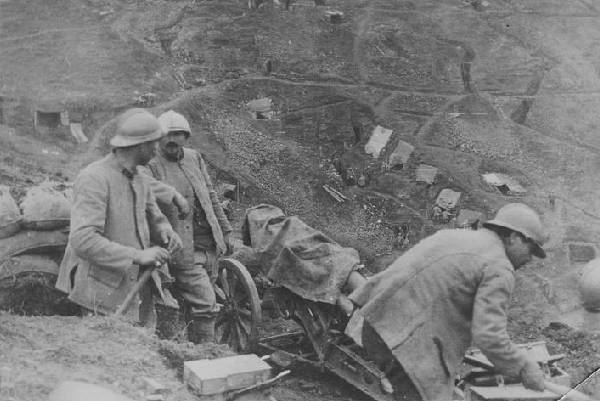
The Battle of Monastir is a series of battles between the Bulgarian and French troops for the Chervena Stena peak on the Thessaloniki front of the First World War. The battle ended with the victory of the Bulgarian troops, who, after retreating from the peak in March 1917, during a decisive attack in May, managed to recapture the peak, inflicting defeat on the French troops.


The First Balkan War lasted from October 1912 to May 1913 and involved actions of the Balkan League (the Kingdoms of Bulgaria, Serbia, Greece and Montenegro) against the Ottoman Empire. The Balkan states' combined armies overcame the initially numerically inferior (significantly superior by the end of the conflict) and strategically disadvantaged Ottoman armies and achieved rapid success. The war was a comprehensive and unmitigated disaster for the Ottomans, who lost 83% of their European territories and 69% of their European population. As a result of the war, the League captured and partitioned almost all of the Ottoman Empire's remaining territories in Europe.


The First World War began on July 28, 1914, and lasted until November 11, 1918. It was a global war and lasted exactly 4 years, 3 months, and 2 weeks. Most of the fighting was in continental Europe. Soldiers from many countries took part, and it changed the colonial empires of the European powers. Before World War II began in 1939, World War I was called the Great War, or the World War. Other names are the Imperialist War and the Four Years' War. There were 135 countries that took part in the First World War, and nearly 10 million people died while fighting. Before the war, European countries had formed alliances to protect themselves. However, that made them divide themselves into two groups. When Archduke Franz Ferdinand of Austria was assassinated on June 28, 1914, Austria-Hungary blamed Serbia and declared war on it. Russia then declared war on Austria-Hungary, which set off a chain of events in which members from both groups of countries declared war on each other.

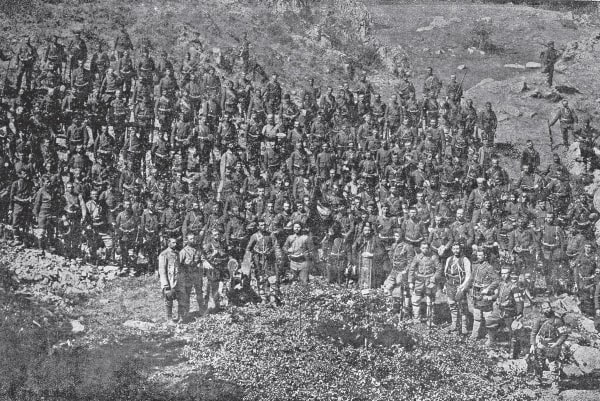
The Ilinden-Preobrazhenie Uprising, or simply the Ilinden Uprising of August-October 1903, was an organized revolt against the Ottoman Empire, which was prepared and carried out by the Internal Macedonian-Adrianople Revolutionary Organization, with the support of the Supreme Macedonian-Adrianople Committee, which included mostly Bulgarian military personnel. The name of the uprising refers to Ilinden, a name for Elijah's day, and to Preobrazhenie which means Transfiguration. Some historians describe the rebellion in the Serres revolutionary district as a separate uprising, calling it the Krastovden Uprising (Holy Cross Day Uprising), because on September 14 the revolutionaries there also rebelled. The revolt lasted from the beginning of August to the end of October and covered a vast territory from the western Black Sea coast in the east to the shores of Lake Ohrid in the west.


The Second Balkan War, also called the Inter-Allied War, was a conflict that broke out when Bulgaria, dissatisfied with its share of the spoils of the First Balkan War, attacked its former allies, Serbia and Greece, on 16 June 1913. Serbian and Greek armies repulsed the Bulgarian offensive and counter-attacked, entering Bulgaria. With Bulgaria also having previously engaged in territorial disputes with Romania and the bulk of Bulgarian forces engaged in the south, the prospect of an easy victory incited Romanian intervention against Bulgaria. The Ottoman Empire also took advantage of the situation to regain some lost territories from the previous war. When Romanian troops approached the capital Sofia, Bulgaria asked for an armistice, resulting in the Treaty of Bucharest, in which Bulgaria had to cede portions of its First Balkan War gains to Serbia, Greece and Romania. In the Treaty of Constantinople, it lost Adrianople to the Ottomans.


The Second World War was a global war that involved fighting in most of the world. Most countries fought from 1939 to 1945, but some started fighting in 1937. Most of the world's countries, including all of the great powers, fought as part of two military alliances: the Allies and the Axis Powers. It involved more countries, cost more money, involved more people, and killed more people than any other war in history. Between 50 to 85 million people died, most of whom were civilians. The war included massacres, a genocide called the Holocaust, strategic bombing, starvation, disease, and the only use of nuclear weapons against civilians in history.


The Serbo-Bulgarian War was a war between the Kingdom of Serbia and Principality of Bulgaria that erupted on 14 November 1885 and lasted until 28 November 1885. Despite Bulgaria being a vassal state of the Ottoman Empire, the Turks did not intervene in the war. Serbia took the initiative in starting the war but was decisively defeated. Austria demanded Bulgaria stop its invasion, and a truce resulted. Final peace was signed on 3 March 1886 in Bucharest. The old boundaries were not changed. As a result of the war, European powers acknowledged the act of Unification of Bulgaria which happened on 18 September 1885.

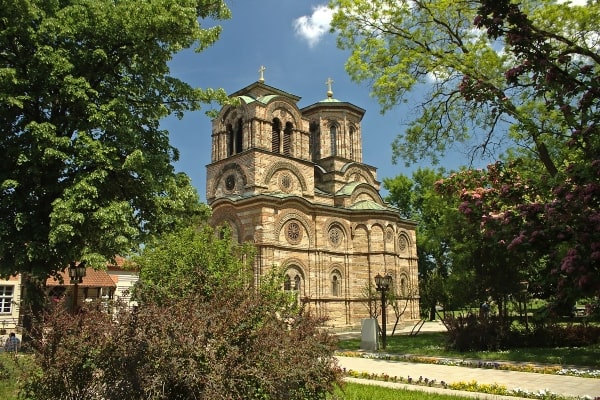
Kruševac is a city and the administrative center of the Rasina District in central Serbia. It is located in the valley of West Morava, on the Rasina River. Kruševac was founded in 1371, as a fortified town in the possession of Lord Lazar Hrebeljanović. The Lazarica Church was built by Lazar between 1375 and 1378, in the Morava architectural style. At the beginning of the German occupation of Yugoslavia, the units of the Yugoslav Army in the Fatherland commanded by Dragutin Keserović and supported by one detachment of communists attacked the German garrison in September 1941 but failed to liberate the town after four days of battle. During the Second World War mass executions of patriots and antifascists occurred on hill Bagdala.

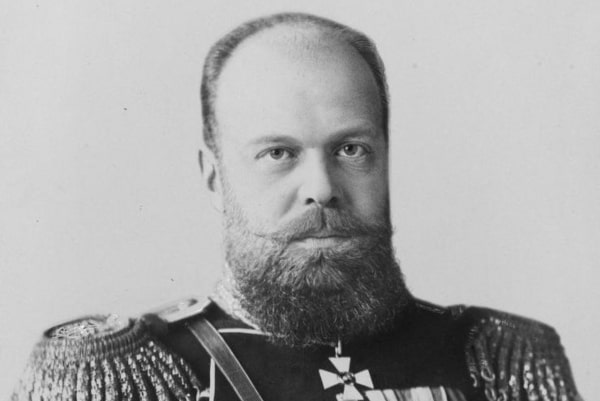
Alexander III (10 March 1845 - 1 November 1894) was Emperor of Russia, King of Congress Poland and Grand Duke of Finland from 13 March 1881 until his death in 1894. He was highly reactionary in domestic affairs and reversed some of the liberal reforms of his father, Alexander II. This policy is known in Russia as "counter-reforms". Under the influence of Konstantin Pobedonostsev (1827-1907), he opposed any socio-economic moves that limited his autocratic rule. During his reign, Russia fought no major wars as well. He, therefore, came to be known as "The Peacemaker", with that laudatory title enduring into the 21st century among historians (as the Tsar -Mirotvorets). Outside of politics, Alexander was additionally known for his striking appearance, with an American historian later noting how he stood out as being a "tall, heavy-set man, of enormous muscular strength." Alexander's major foreign policy achievement was helping forge the Russo-French Alliance and thus directing a major shift in the international relations of Russian society that endured for decades. His political legacy represented a direct challenge to the European cultural order set forth by German statesman Otto von Bismarck, intermingling Russian influences with the shifting balances of power. Alexander's long, multifaceted legacy has been commemorated in public installations across multiple nations. A notable example outside of Russia is the Pont Alexandre III, an ornate arch bridge spanning the Seine in Paris, France. That installation has received mass attention for over a century.

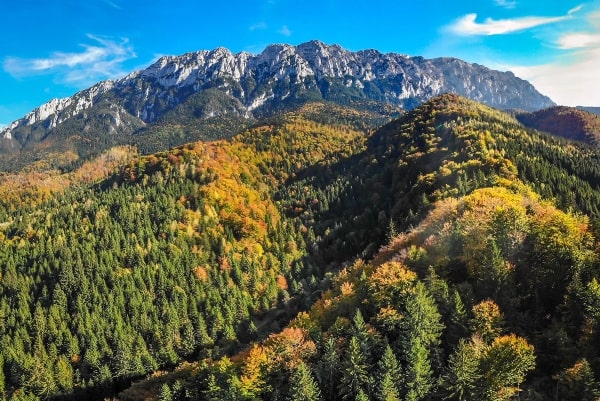
The Carpathian Mountains or Carpathians are a range of mountains forming an arc across Central Europe and Southeast Europe. The Carpathians provide habitat for the largest European populations of brown bears, wolves, chamois, and lynxes, with the highest concentration in Romania, as well as over one-third of all European plant species. The mountains and their foothills also have many thermal and mineral waters, with Romania having one-third of the European total. Romania is likewise home to the second-largest area of virgin forests in Europe after Russia.

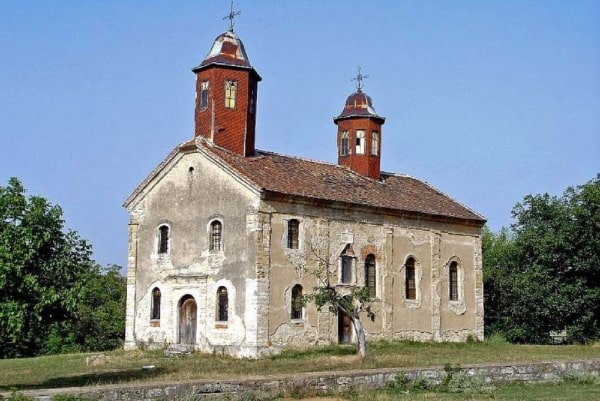
The village of Sinagovtsi is located in North-West Bulgaria and is included in the municipality Vidin. Neighboring villages are Tarnyane and Ivanovtsi and the town of Dunavtsi. Near the village, Sinagovtsi runs the Vidbol River and the Danube. In the region were found traces of primitive people, primitive tools, rock paintings, and others. The village itself was founded in the times of the Roman Republic. The found remnants attest to a well-developed settlement with water and sewage in the region more than 2000 years ago. The Temple of Saint Constantine and Helena, built in 1885, is one of the village attractions.

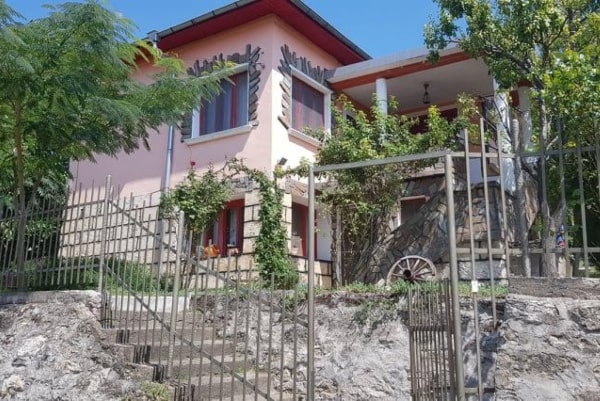
Bukovets is a village in northwestern Bulgaria. It is located in Vidin Municipality, Vidin District. The village of Bukovets is one of the largest villages in Vidin Municipality. It is located 10.5 km southwest of the town of Vidin, 2 km from the town of Dunavtsi, and 5 km from the locality of Bozhuritsa (the recreation area is located in a high-stemmed oak forest in Northwestern Bulgaria). After the Kula events in March 1951, 5 families (17 people) from the village were forcibly evicted by the communist regime.

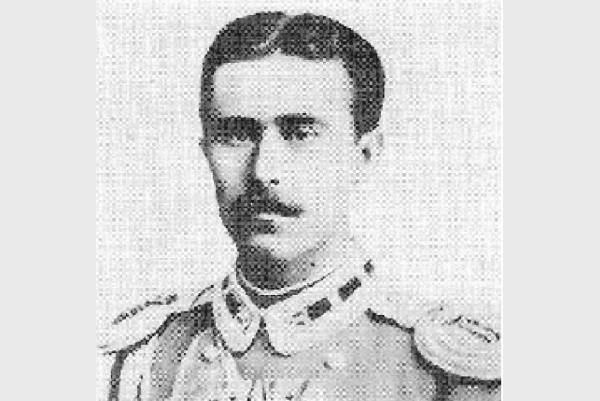
Marin Yanakiev Marinov is a Bulgarian officer, wing-adjutant of Prince Alexander I of Battenberg, and a hero of the Serbo-Bulgarian war. Marin Marinov was born on March 25, 1856, in Ruse in the family of a merchant. He graduated with the first graduation in 1879, was promoted to the rank of ensign, and was assigned to the 23rd Ruse infantry regiment. He was later promoted to the rank of second lieutenant and appointed aide-de-camp to Prince Alexander I of Battenberg. On August 30, 1882, he was promoted to the rank of lieutenant. In the same year, as a lieutenant in the Sofia 1st squad, he was seconded to a military unit in Tsarskoe Selo, Russia. He entered the Officer Infantry Rifle School in Oranienbaum, graduating in 1883. After he returned to Bulgaria in 1885, on August 30 he was promoted to the rank of captain, continuing to serve as the prince's adjutant. On September 21, 1885, at his request, he was appointed commander of the 3rd Bdin Infantry Regiment, whose command he assumed on October 1.

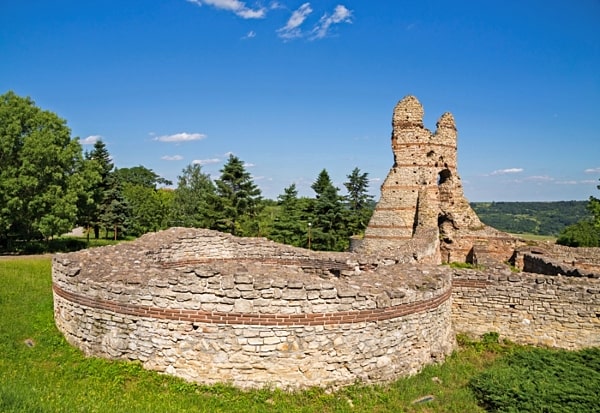
Kula is a town in northwestern Bulgaria. It is the administrative centre of Kula Municipality part of Vidin Province. Kula is the modern site of the Roman fortress of Castra Martis, the ruins of which can still be seen today, which also was a bishopric in the Roman province of Dacia Ripensis and remains a Latin Catholic titular see under the Latin name. The town has a museum exhibiting various tools and everyday items found in the fortress, as well as a miniature model of the Roman town. While within Danube Vilayer of the Ottoman Empire, the town was called Adliye and Yezdanş?r became its Governor in the late 1860s.

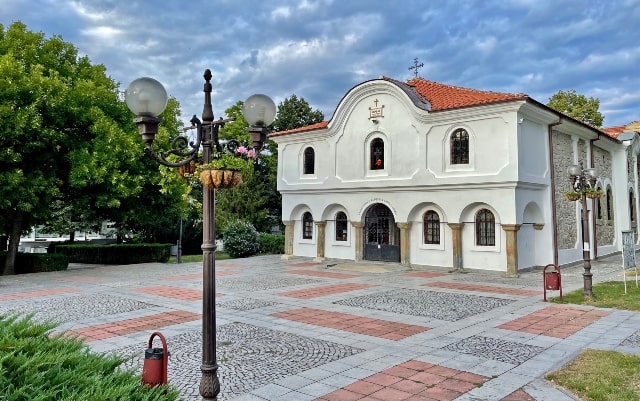
Elkhovo is a town in southeastern Bulgaria and the main town of the Elkhovo municipality. Excavated burial mounds, copper instruments, and pottery show that there has been a constant human presence in this area since the Neolithic period. The Bronze Age is characterized by the Thracian culture. Today, there are still many remains of Thracian fortresses, settlements, and tombstones. In 45 AD, this area came into the hands of the Roman Empire. For the Romans, this area around Elkhovo had a very favorable location, Adrianople (present-day Edirne) was connected to Augusta Traiana (present-day Stara Zagora). From the fourteenth century until the death of Constantine XI, Elkhovo belonged to the Byzantine Empire. In 1878, at the Congress of Berlin, this area became part of Eastern Rumelia, which remained under the political and military rule of the Ottoman Empire. After the unification of the Principality of Bulgaria with Eastern Rumelia in 1885, this area came within the borders of the Bulgarian state.


The Louvre, or the Louvre Museum, is a national art museum in Paris, France, and one of the most famous museums in the world. It is located on the Right Bank of the Seine in the city's 1st arrondissement and home to some of the most canonical works of Western art, including the Mona Lisa, Venus de Milo, and Winged Victory. The museum is housed in the Louvre Palace, originally built in the late 12th to 13th century under Philip II. Remnants of the Medieval Louvre fortress are visible in the basement of the museum. Due to urban expansion, the fortress eventually lost its defensive function, and in 1546 Francis I converted it into the primary residence of the French kings.

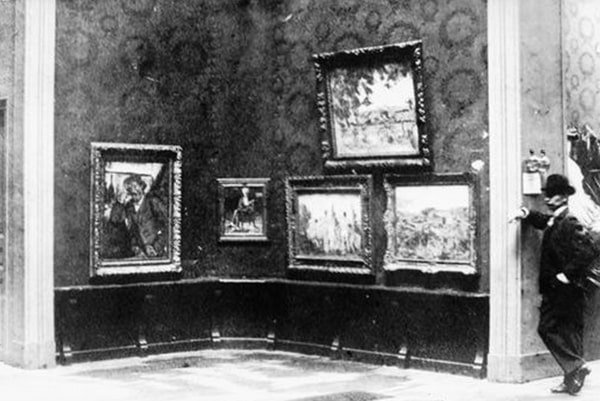
The Salon d'Automne, is an art exhibition held annually in Paris. Since 2011, it has been held at the Champs-Élysées. Perceived as a reaction against the conservative policies of the official Paris Salon, this massive exhibition almost immediately became the showpiece of developments and innovations in 20th-century painting, drawing, sculpture, engraving, architecture, and decorative arts. During the Salon's early years, established artists such as Pierre-Auguste Renoir threw their support behind the new exhibition and even Auguste Rodin displayed several works. Since its inception, works by artists such as Paul Cézanne, Henri Matisse, Paul Gauguin, Georges Rouault, André Derain, Albert Marquet, Jean Metzinger, Albert Gleizes, and Marcel Duchamp have been shown. In addition to the 1903 inaugural exhibition, three other dates remain historically significant for the Salon d'Automne: 1905 bore witness to the birth of Fauvism; 1910 witnessed the launch of Cubism; and 1912 resulted in a xenophobic and anti-modernist quarrel in the National Assembly.

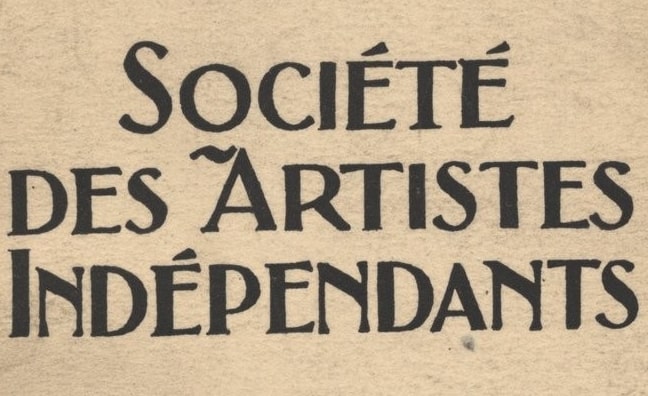
The Société des Artistes Indépendants or Salon des Indépendants was formed in Paris on 29 July 1884. The association began with the organization of massive exhibitions in Paris, choosing the slogan "sans jury ni récompense" ("without jury nor reward"). Albert Dubois-Pillet, Odilon Redon, Georges Seurat, and Paul Signac were among its founders. For the following three decades, their annual exhibitions set the trends in art of the early 20th century, along with the Salon d'Automne. This is where artworks were often first displayed and widely discussed. World War I brought a closure to the salon, though the Artistes Indépendants remained active. Since 1920, the headquarters has been located in the vast basements of the Grand Palais (next door to the Société des Artistes Français, the Société Nationale des Beaux-Arts, the Société du Salon d'Automne, and others).

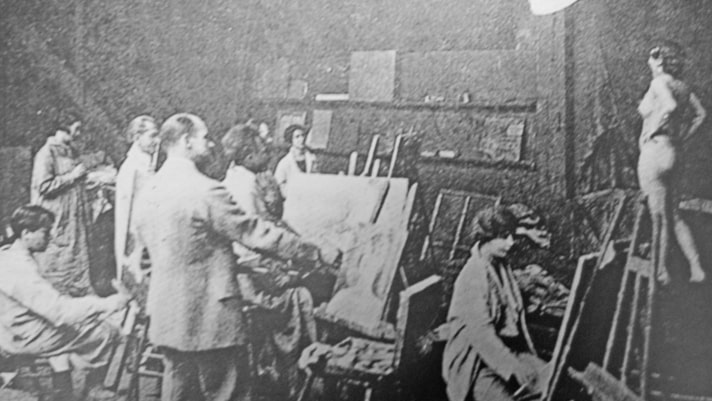
The Académie Colarossi (1870-1930) was an art school in Paris founded in 1870 by the Italian model and sculptor Filippo Colarossi.[1] It was originally located on the Île de la Cité, and it moved in 1879 to 10 rue de la Grande-Chaumiere in the 6th arrondissement. The school closed in the 1930s.

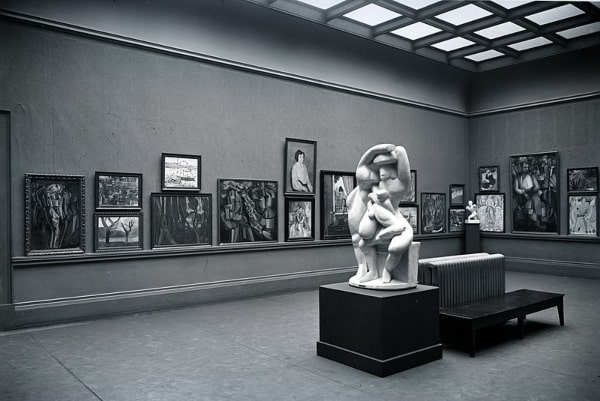
The 1913 Armory Show, also known as the International Exhibition of Modern Art, was organized by the Association of American Painters and Sculptors. It was the first large exhibition of modern art in America, as well as one of the many exhibitions that have been held in the vast spaces of U.S. National Guard armories. The three-city exhibition started in New York City's 69th Regiment Armory, on Lexington Avenue between 25th and 26th Streets, from February 17 until March 15, 1913. The exhibition went on to the Art Institute of Chicago and then to The Copley Society of Art in Boston, where, due to a lack of space, all the work by American artists was removed.

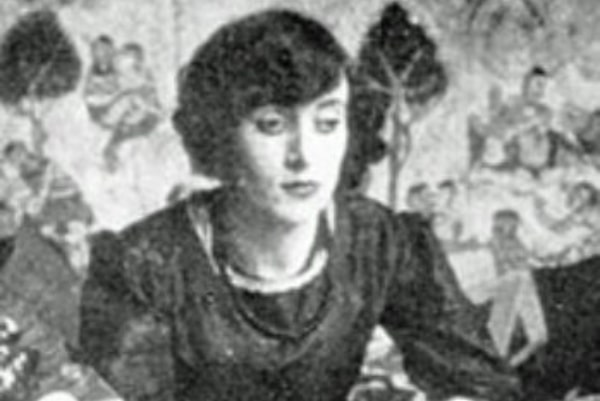
Hermine Lionette Cartan David (19 April 1886 in Paris - 1 December 1970 in Bry-sur-Marne) was a French painter. She became one of the École de Paris artists, a group of mostly non-French artists, émigrés, particularly from Eastern Europe who were working in Paris before the First World War. Jules Pascin was another member of that artistic group, whom she met in 1907. By that time, she was already well-established as a successful young painter, miniaturist, and printmaker. She followed Pascin to the United States in 1915, where they were married on 25 September 1918. They stayed a total of five years, past the end of World War I. David exhibited in New York City during her residence there. She outlived her husband by forty years after he committed suicide in 1930. She died in 1970 at Bry-sur-Marne. Her work is included in the collection of the Musée national des beaux-arts du Québec.

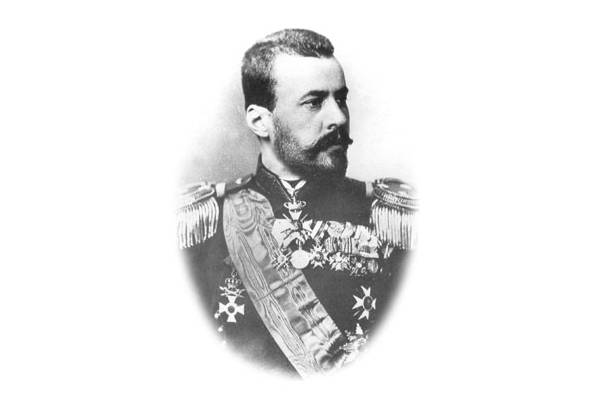
Sava Atanasov Mutkurov (16 December 1852 - 15 March 1891) was a Bulgarian officer (Major General) and politician. One of only three recipients of the Order of Bravery 1st grade, he was among the chief architects of the Bulgarian unification (1885) and, as an officer in the young Bulgarian Army, one of its defendants in the Serbo?Bulgarian War (1885). He also served as one of the regents of the Principality of Bulgaria after Prince Alexander of Battenberg's abdication (1886-1887) and was Minister of War in Stefan Stambolov's government (1887-1891).
